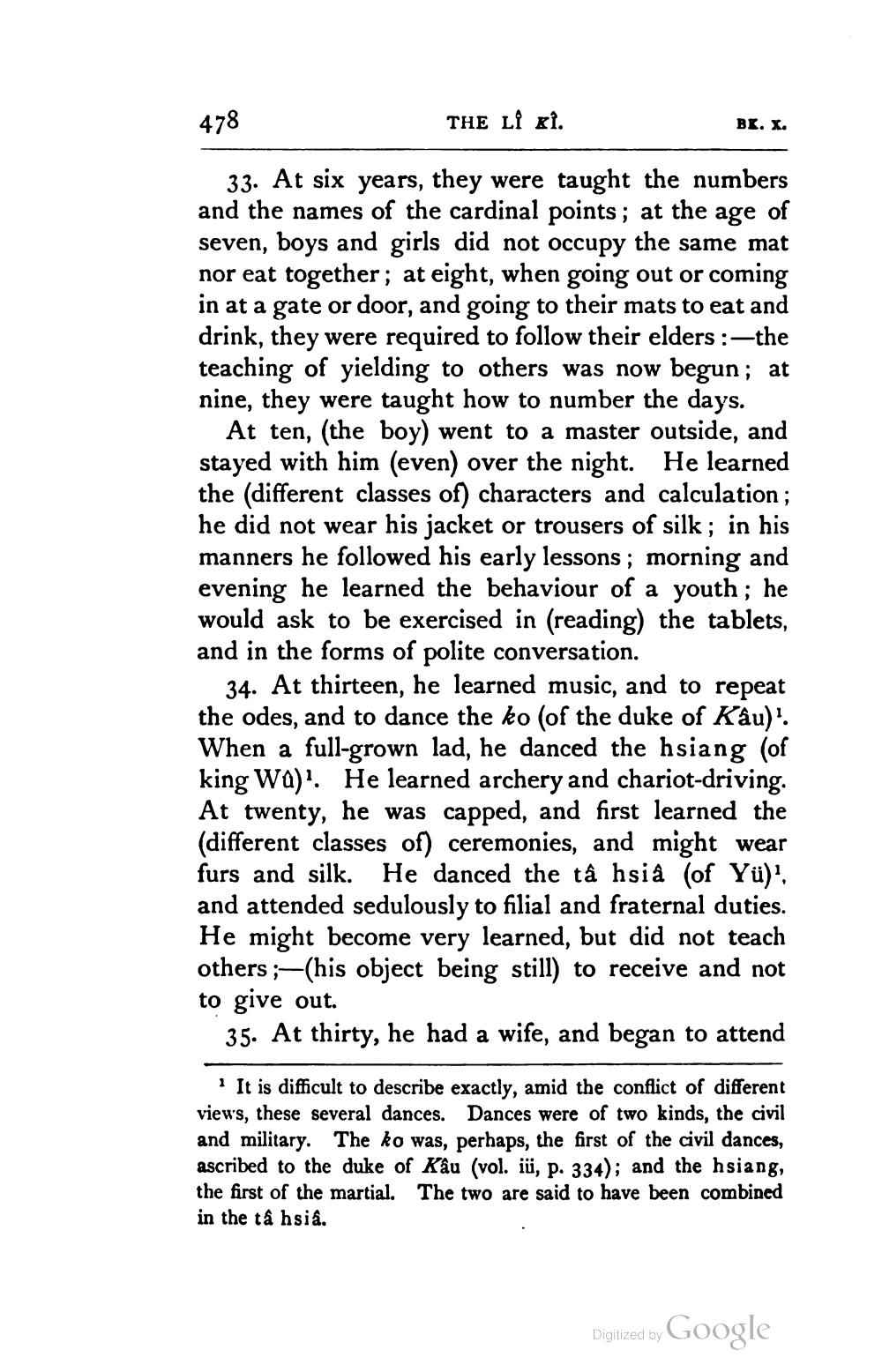________________
478
THE LÎ xi.
BK. X.
33. At six years, they were taught the numbers and the names of the cardinal points; at the age of seven, boys and girls did not occupy the same mat nor eat together; at eight, when going out or coming in at a gate or door, and going to their mats to eat and drink, they were required to follow their elders :—the teaching of yielding to others was now begun; at nine, they were taught how to number the days.
At ten, (the boy) went to a master outside, and stayed with him (even) over the night. He learned the (different classes of) characters and calculation ; he did not wear his jacket or trousers of silk; in his manners he followed his early lessons; morning and evening he learned the behaviour of a youth; he would ask to be exercised in (reading) the tablets, and in the forms of polite conversation.
34. At thirteen, he learned music, and to repeat the odes, and to dance the ko (of the duke of Kau)! When a full-grown lad, he danced the hsiang (of king Wa)? He learned archery and chariot-driving. At twenty, he was capped, and first learned the (different classes of) ceremonies, and might wear furs and silk. He danced the tà hsia (of Yü)', and attended sedulously to filial and fraternal duties. He might become very learned, but did not teach others ;—(his object being still) to receive and not to give out.
35. At thirty, he had a wife, and began to attend
1 It is difficult to describe exactly, amid the conflict of different views, these several dances. Dances were of two kinds, the civil and military. The ko was, perhaps, the first of the civil dances, ascribed to the duke of Kâu (vol. iü, p. 334); and the hsiang, the first of the martial. The two are said to have been combined in the ta hsia.
Digitized by Google




